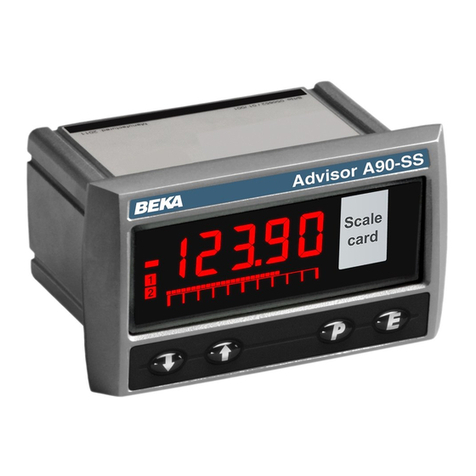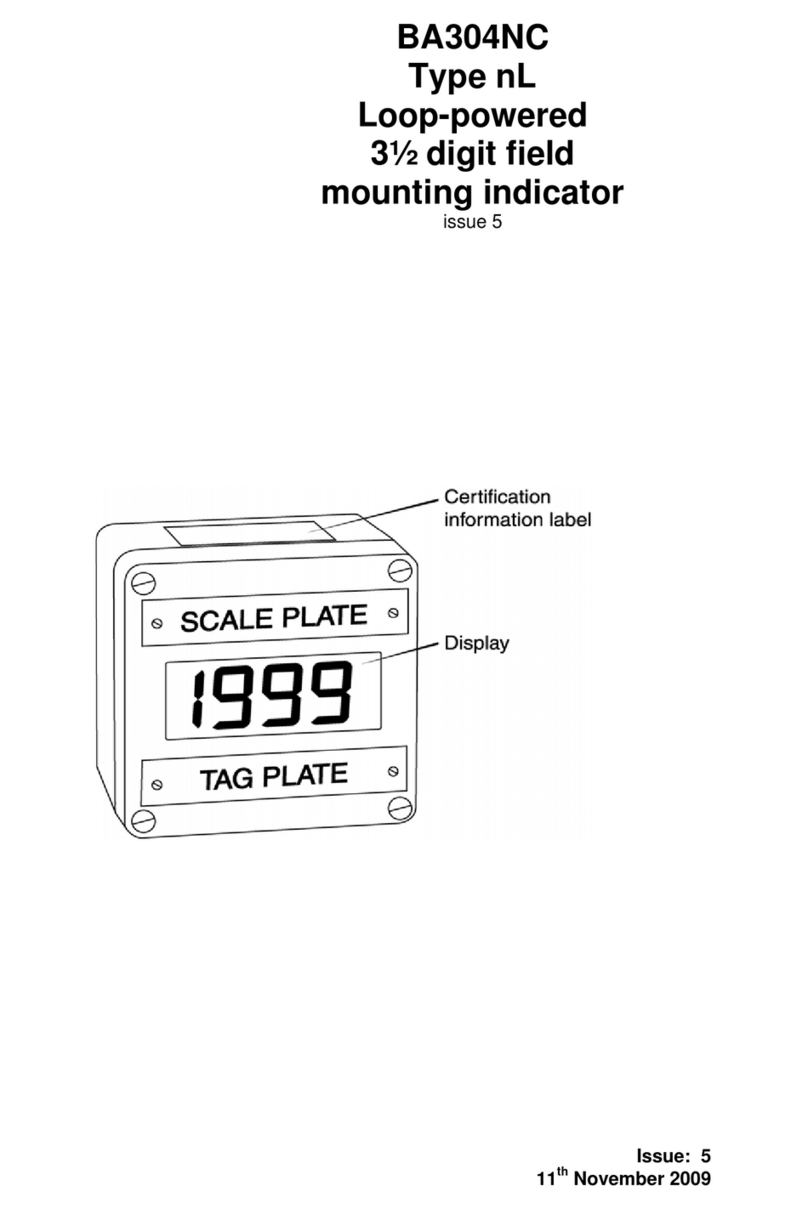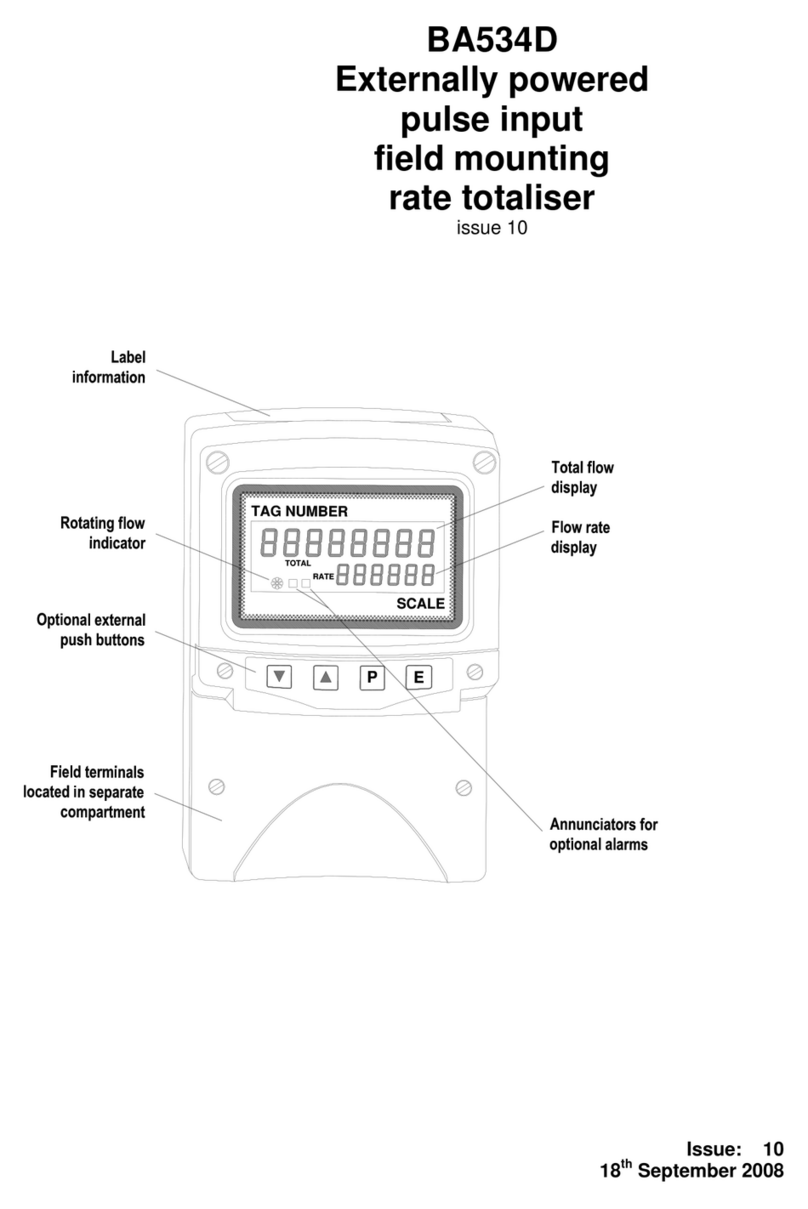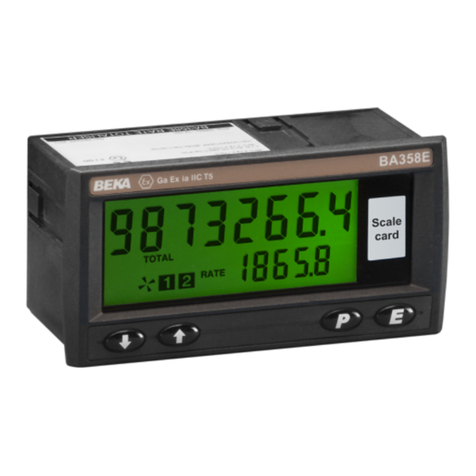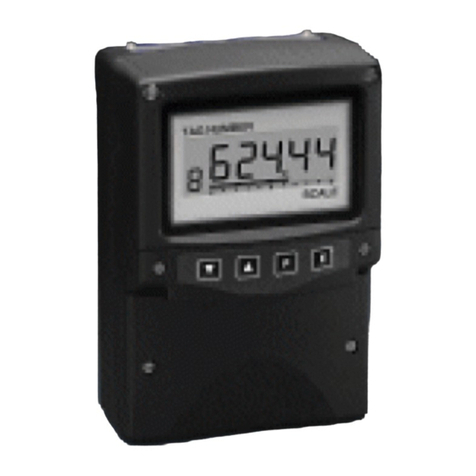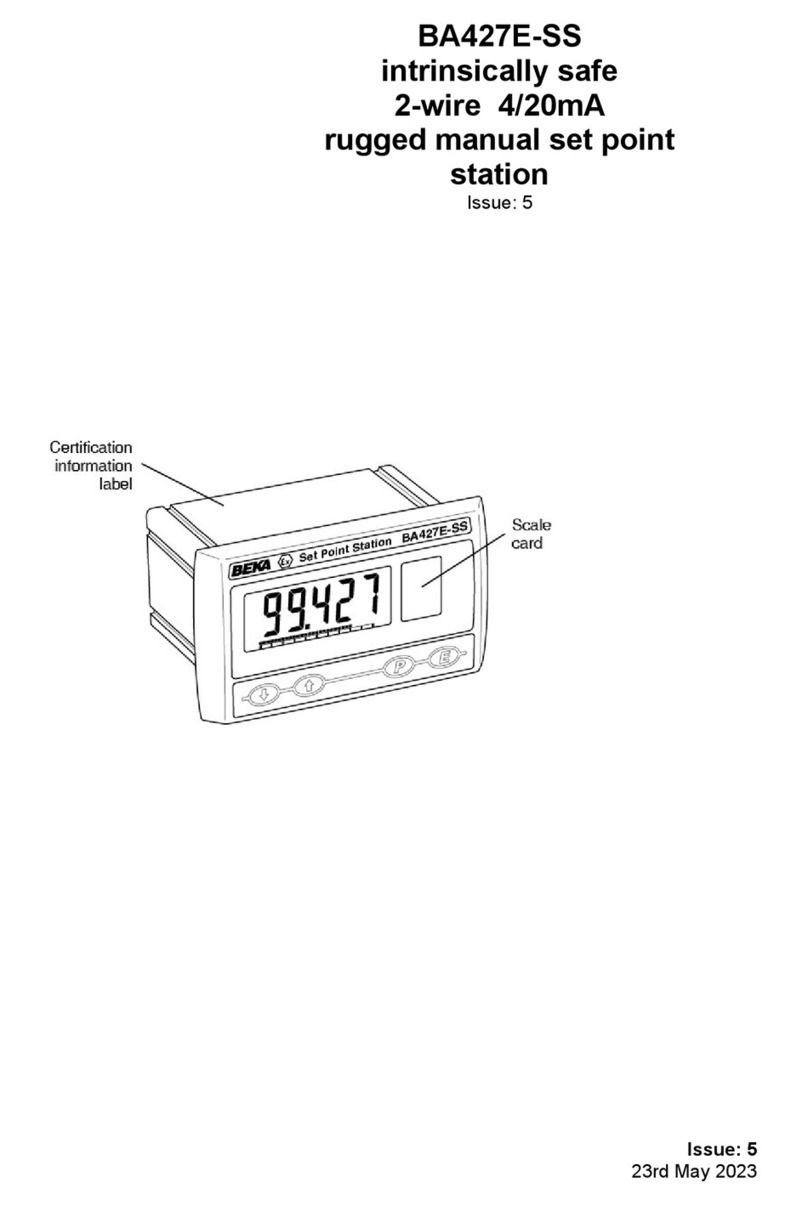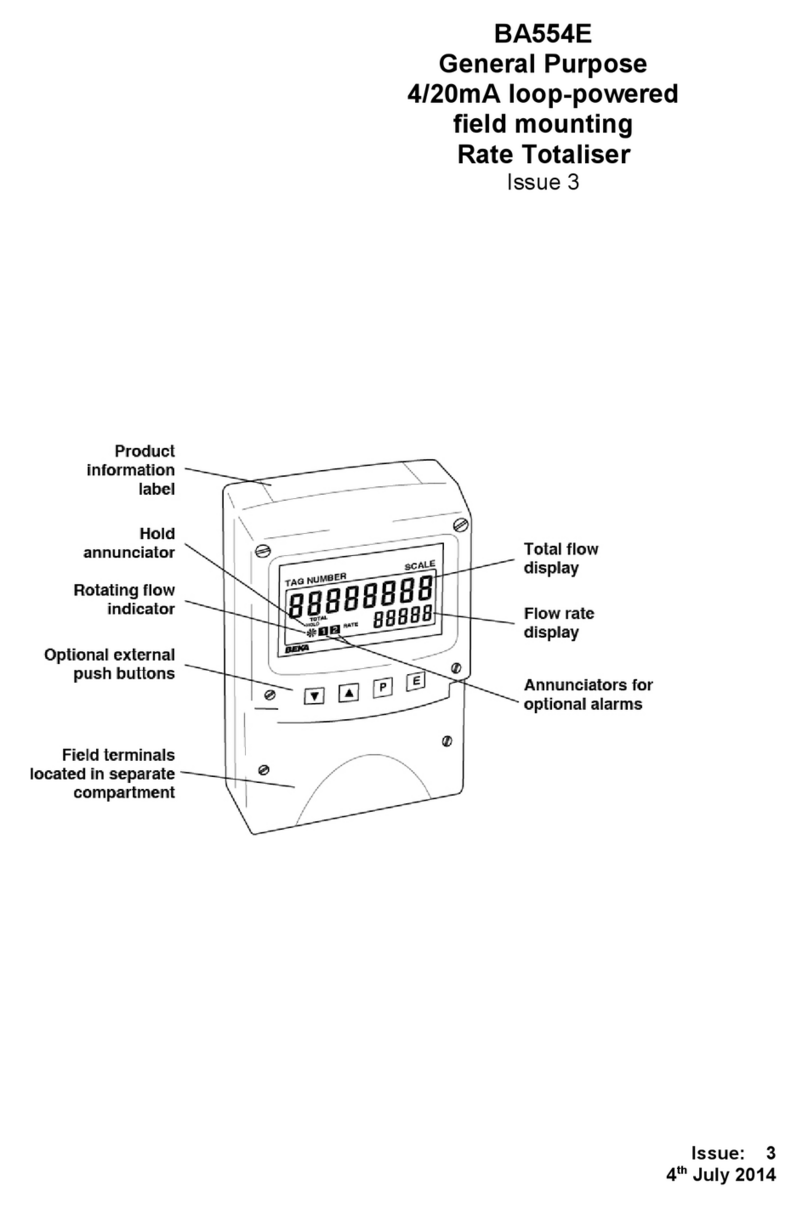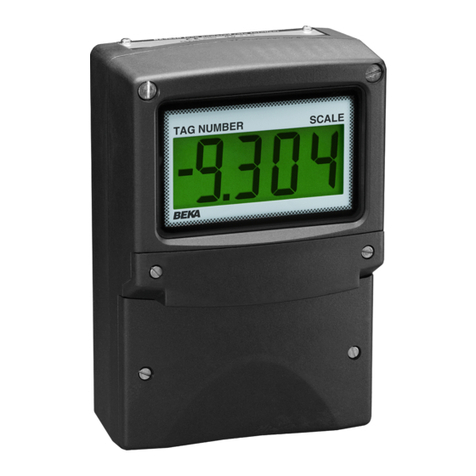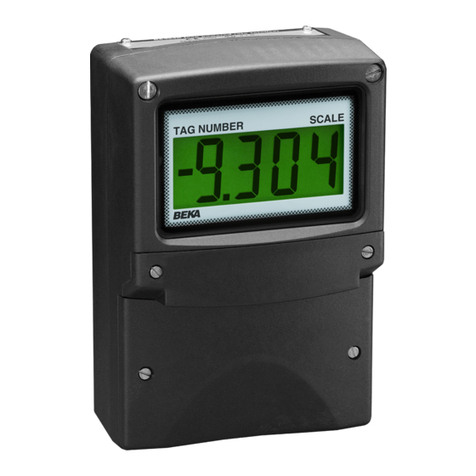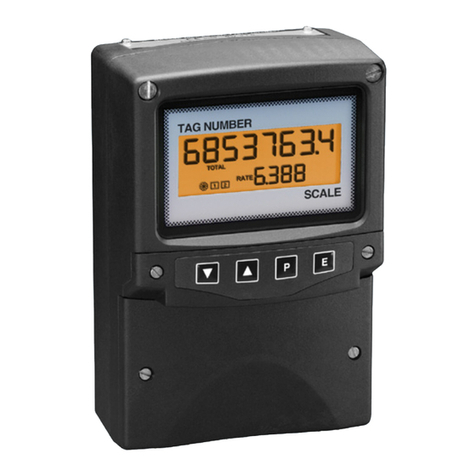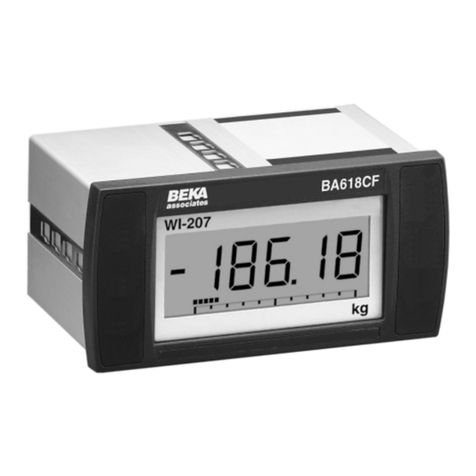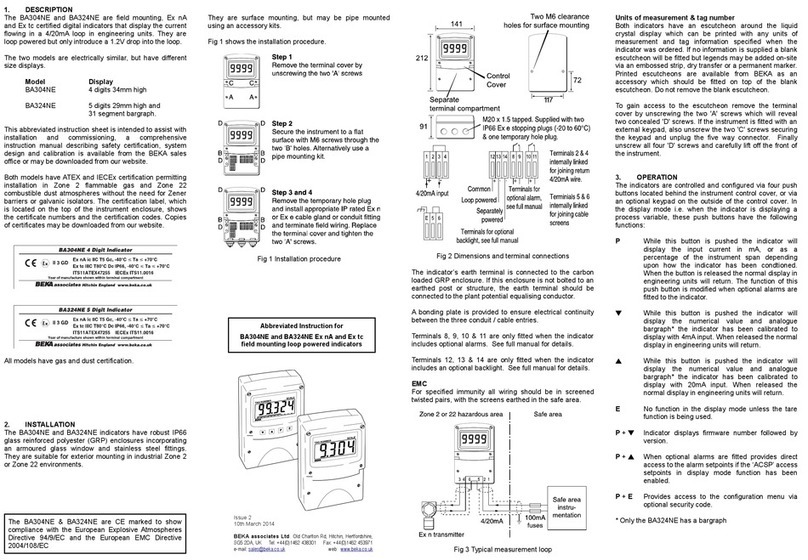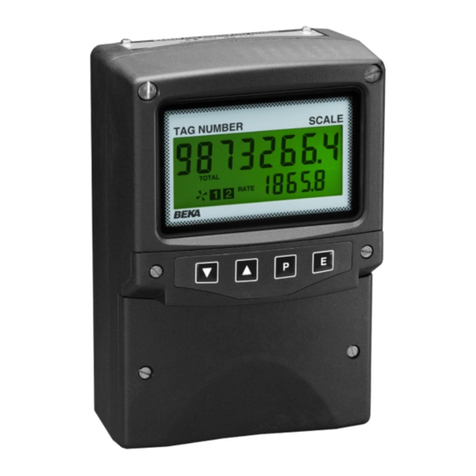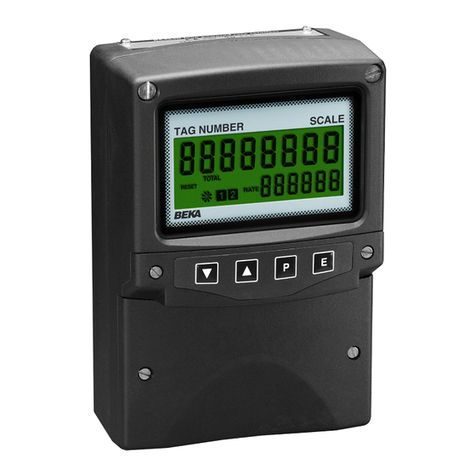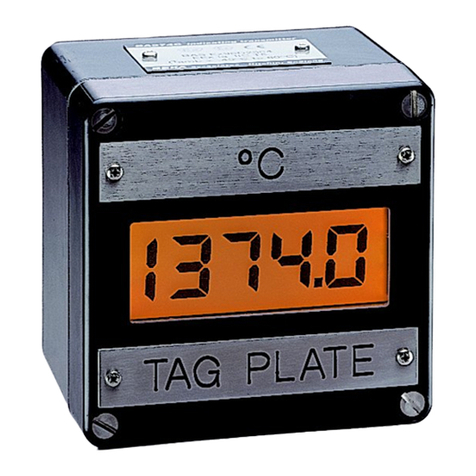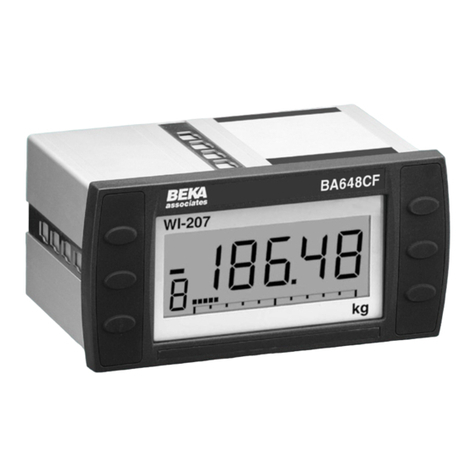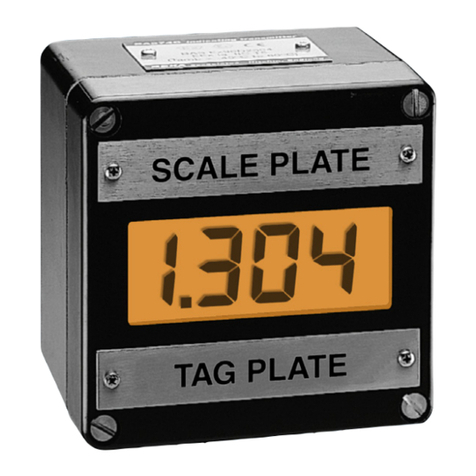
3. INTRINSIC SAFETY CERTIFICATION
The BA337E-SS rate totaliser has ATEX and IECEx
gas and dust certification. This section of the
instruction manual describes ATEX gas certification.
Dust, IECEx and other approvals are each described
in separate appendixes to this manual.
3.1 ATEX gas certification
Notified Body Intertek Testing and Certification Ltd
have issued the BA337E-SS with an EC-Type
Examination Certificate number ITS16ATEX28408X.
This confirms compliance with harmonised European
standards and it has been used to confirm compliance
with the European ATEX Directive for Group II,
Category 1G equipment. The Rate Totaliser carries
the European Community mark and subject to local
codes of practice may be installed in any of the
European Economic Area (EEA) member countries.
ATEX certificates are also acceptable for installations
in Switzerland.
This section of the instruction manual describes ATEX
installations in explosive gas atmospheres complying
with EN60079-14 Electrical Installation Design,
Selection and Erection. When designing systems for
installation outside the UK the local Code of Practice
should be consulted.
3.2 Zones, gas groups and T rating
The BA337E-SS Rate Totaliser has been certified
Ex ia IIC T5 Ga. When connected to a suitable
system it may be installed in:
Zone 0 explosive gas air mixture
continuously present.
Zone 1 explosive gas air mixture likely
to occur in normal operation.
Zone 2 explosive gas air mixture not
likely to occur, and if it does
will only exist for a short time.
In gases that may be used with equipment having a
temperature classification of:
Group A propane
Group B ethylene
Group C hydrogen
Having a temperature classification of:
T1 450ºC
T2 300ºC
T3 200ºC
T4 135ºC
T5 100ºC
At ambient temperatures between:
-40 to +60oC When installed as an
intrinsically safe Ex i
instrument in an Ex e, Ex n,
Ex p or Ex t enclosure.
-40 to +70oC When used as an intrinsically
safe Ex i instrument not in
an Ex e, Ex n, Ex p or Ex t
enclosure.
3.3 Special conditions for safe use
The ATEX intrinsic safety certificate number has an
‘X’ suffix indicating that for some applications special
conditions apply for safe use.
When installed in an Ex e, Ex n, Ex p or Ex t
panel enclosure all connections to the
BA337E-SS must be made by appropriately
rated Zener barriers or galvanic isolators.
This means that when installed in an Ex e, Ex n,
Ex p or Ex t panel enclosure the BA337E-SS
remains an intrinsically safe instrument and must
comply with the installation requirements shown in
this manual.
The certificate also states:
The front of the stainless steel enclosure
complies with the requirements for Ex e, Ex n
Ex p & Ex t type of protection.
Therefore when correctly installed the BA337E-SS
Rate Totaliser will not invalidate the Ex e, Ex n, Ex p
or Ex t panel enclosure certification.
Note: At temperatures below -20°C the instrument
will continue to function, but the display response will
become slower and the contrast will be reduced.
7
